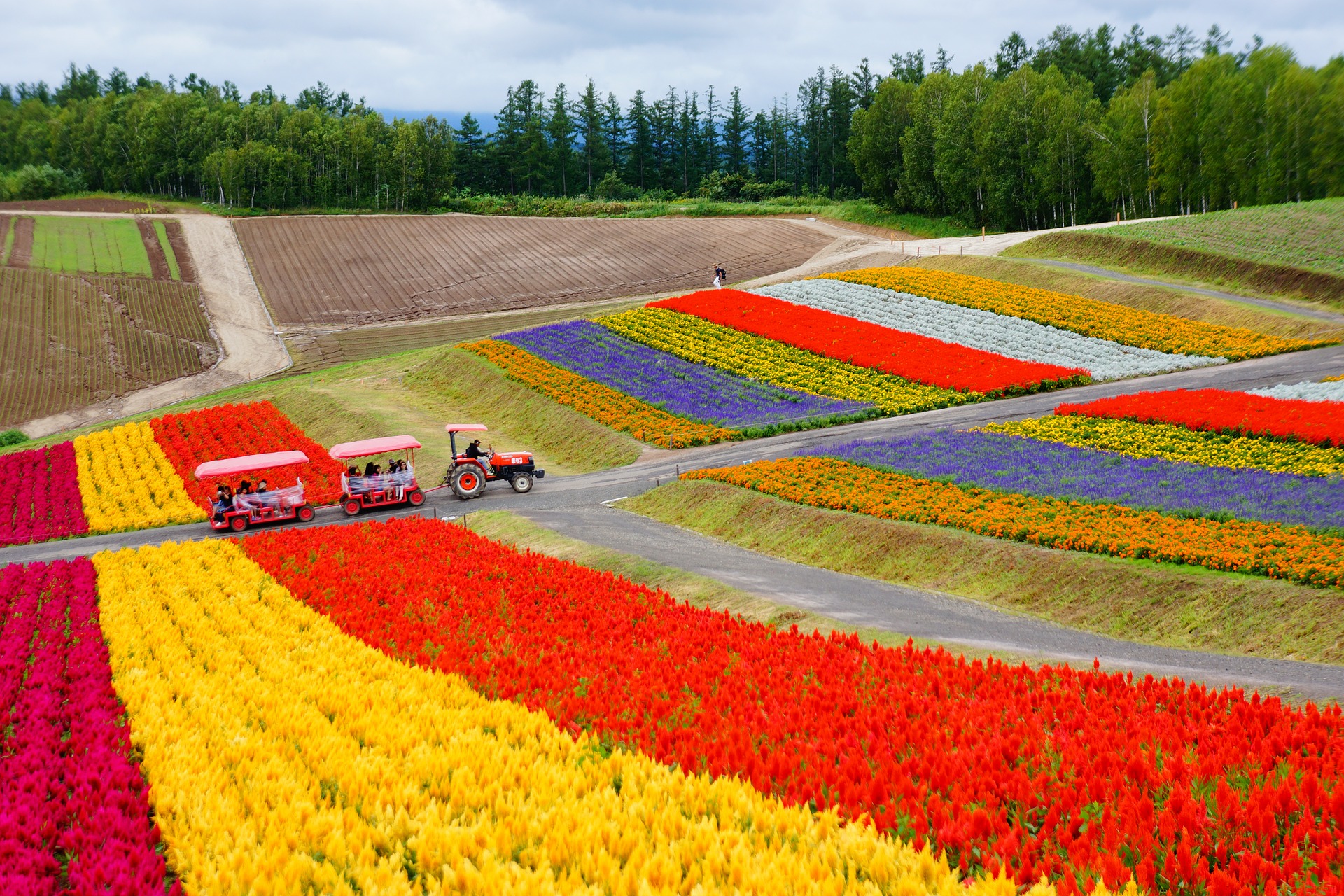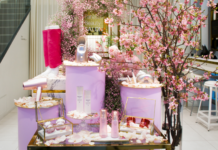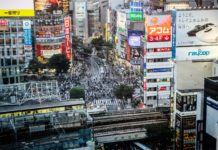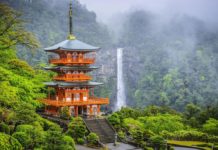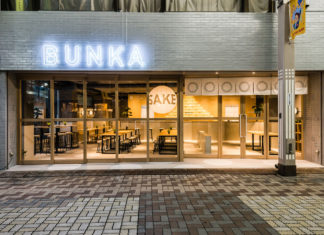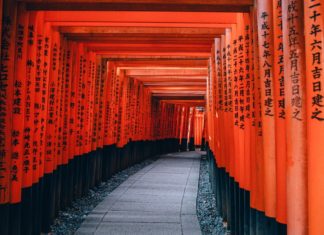1. BEACHES
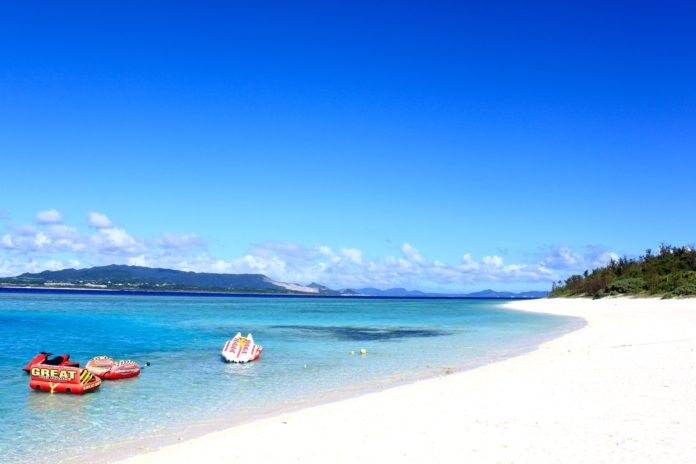
When it comes to visiting The Land of Rising Sun, many of us know that there are ski activities during winter, sakura during spring and momijigari (viewing autumn leaves) during autumn. But, what can you do or see during summer in Japan?
Beaches in Japan are really popular during the summer. Locals often “run away” from the hot and humid city areas for a short getaway at the beaches during summer. The warmest months are mid-July to August, however the temperature in southern japan is suitable for swimming from June to September. Here are some areas where you can find nice beaches:
Beaches in Okinawa
Beaches in Okinawa are very popular among the locals and also for international divers. Okinawa is situated at the subtropical latitudes, which offers sunny beach all year round. Other than swimming and water sports, it is a place where you get to see corals and turtles on shores – if you’re lucky enough!
HOW TO GET THERE:
As Okinawa is not part of the main island, the most popular and easiest route is by air. Flights from Narita Airport (Tokyo) takes around 2.5 hours. While on the island itself, you can take either a bus or a monorail.
Beaches near Tokyo

So you do not have enough time to travel far but you still want a taste of the sea in Japan? Worry not. There are beaches around Tokyo too, like Odaiba Beach, Zushi Beach, and Enoshima Beach. These beaches are 30 minutes to 1 hour away from Tokyo and are generally quite popular during the weekends, which also means that they can be a bit crowded. If you want a quieter beach, give Hayama Beach.
HOW TO GET THERE:
All the beaches stated above can be reached via train – mostly from Shinjuku or Shibuya station.
Tottori Sand Dunes
Another unique place to visit in Japan is Tottori Sand Dunes located just outside the city centre near Sanin Kaigan National Park, Tottori Prefecture. It is the largest sand dunes in Japan (a span of 16 kilometers) along the coast line. Other than the coast line and soft sands, you get to ride on camels and horse drawn carts in the area too. It is definitely an Instagram-friendly place!
HOW TO GET THERE:
From Tottori Station, take an hourly bus ¥370 bound for the Tottori Sakyu and get off at the last stop. The whole journey is approximately 20 minutes.
2. FIREWORKS
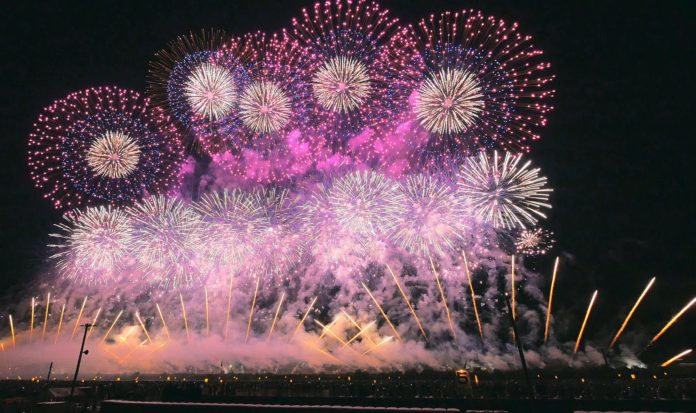
Fireworks (Hanabi) is a major festival during summer. Originally used to chase off evil spirits, it is now held every year across the country mainly during the July and August summer holidays. Often, the fireworks festival is a competition between rival pyrotechnic groups; therefore if you are heading to one, you are pretty much guaranteed a jaw-dropping display.
Omagari National Fireworks Competition
Situated in Akita Prefecture, this is considered one of the top firework show in Japan. What makes it so? It is a fireworks competition where only the best few pyrotechnic teams are invited to showcase their fireworks. Paid seating is available. As transportation can be an issue after the fireworks end, many choose to have theirs arranged by a travel agent. This firework competition will be held on Saturday, 4 August 2018, from 17:30. To get to the site, take a train to Omagari Station and walk along the Marukogawa River.
Sumida River Fireworks
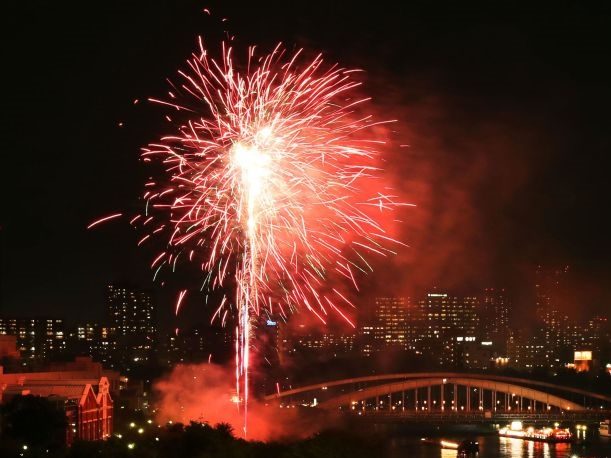
Located in Tokyo, this is one of the oldest and most famous fireworks in Japan. The fireworks are launched along the Sumida River between Ryogoku and Asakusa. Be there early to get a seat along the river for the best viewing spot as it can be very crowded during this time.
It is held on the last Saturday of July from 19:00 – 20:30. You can reach there by taking a train to Asakusa Station.
Osaka Tenjin Fireworks
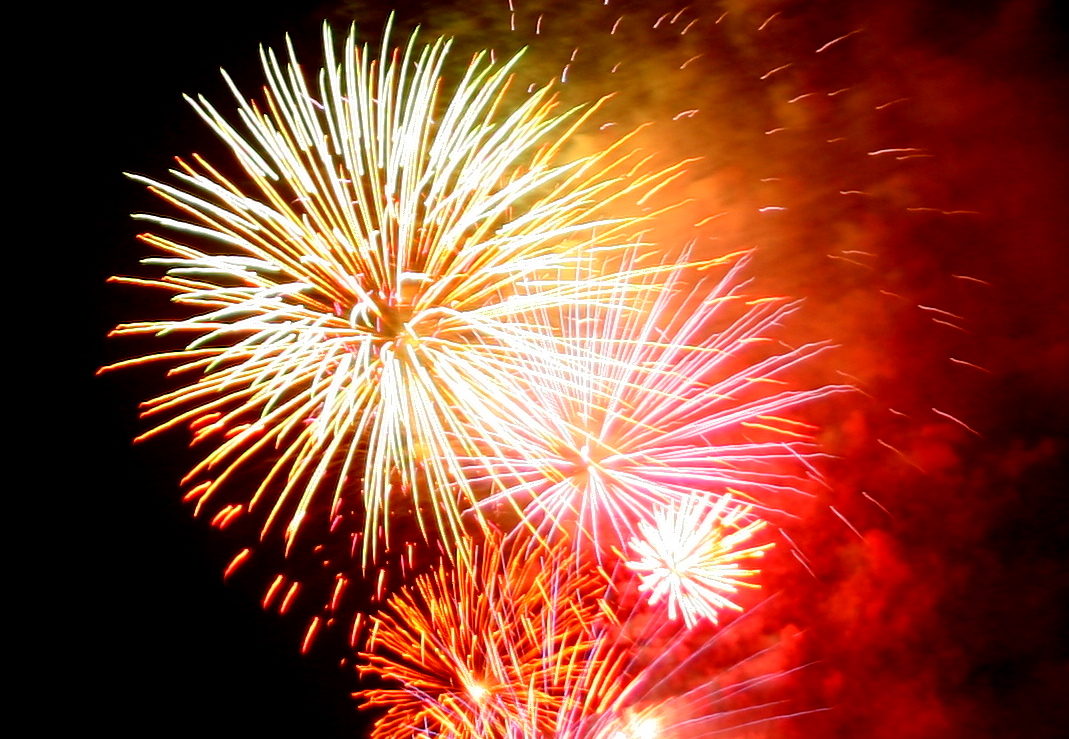
Osaka Tenjin Festival is ranked among Japan’s Three Great Festivals, together with Kyoto’s Gion and Tokyo’s Kanda Festivals. Thousands of fireworks are launched together with illuminated ships bearing portable shrines along the river. Like the other fireworks festival, people dressed in traditional costumes called Yukata and walk along the Ogawa River. Bridges along the river are creatively decorated with lights too.
It is held on the second night of Osaka’s Tenjin Festival. You can reach here by walking along the Ogawa River around Osakajo Kitazume, Osaka Tenmangu, Tenmabashi and Sakuranomiya Stations.
3. AMUSEMENT PARKS
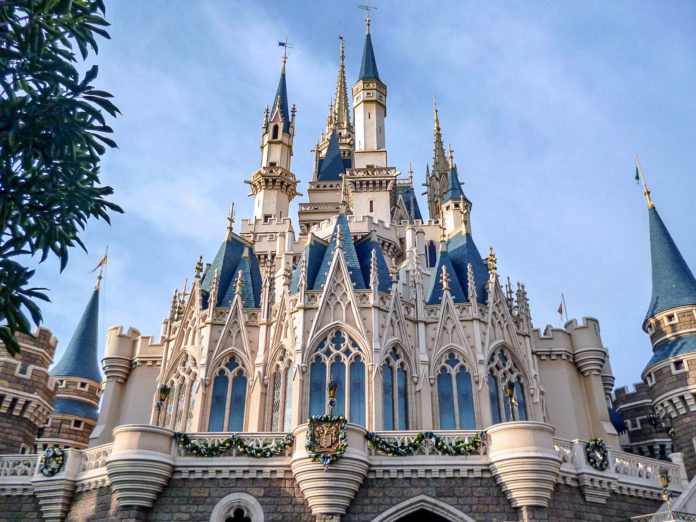
Tokyo Disneyland and DisneySea
As stated in the name, these world renowned theme parks are situated right in the busiest city in Japan – Tokyo. These two theme parks are next to each other and sources have told us that Tokyo DisneySea has more variety of food and drinks for grown ups. Worry not, both the theme parks are built to appeal kids and grown up audiences – they have rides that are suitable for everyone.
ADMISSION FEE:
Adult (ages 18 and over) ¥7,400
Junior (ages 12 – 17) ¥6,400
Child (ages 4 – 11) ¥4,800
OPENING HOURS:
08:00 – 22:00
HOW TO GET THERE:
Take a JR train via JR Keiyo or Musashino Line to JR Maihama station
Universal Studios Japan Osaka
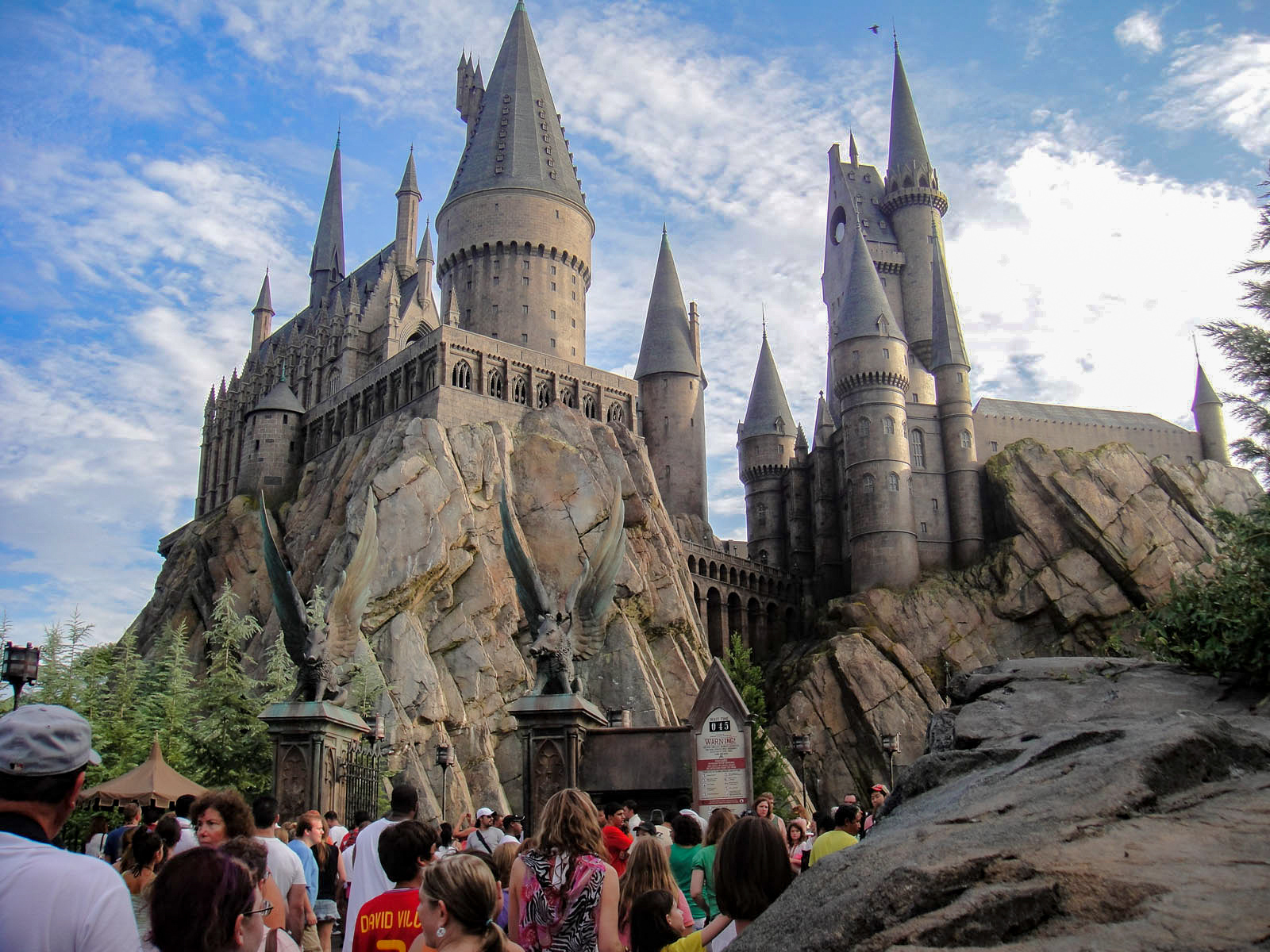
Yes, we have all heard of Universal Studios. What makes the Universal Studios Japan especially unique? It is the home to one of The Wizarding World of Harry Potter – which is not found in every Universal Studios. There, you can experience wearing Hogwarts robes, walking around with a magic wand, and quench your thirst with a chilly cold butterbeer on a hot summer afternoon.
ADMISSION FEE:
Senior Citizen (aged 65 years and older) ¥7,100
Adult (aged 12 – 64) ¥7,900
Child (aged 4 – 11) ¥5,400
OPENING HOURS:
09:00 – 19:00
HOW TO GET THERE:
Take a JR train on the Yumesaki Line to Universal City Station
Nikko Edomura (Edo Wonderland)
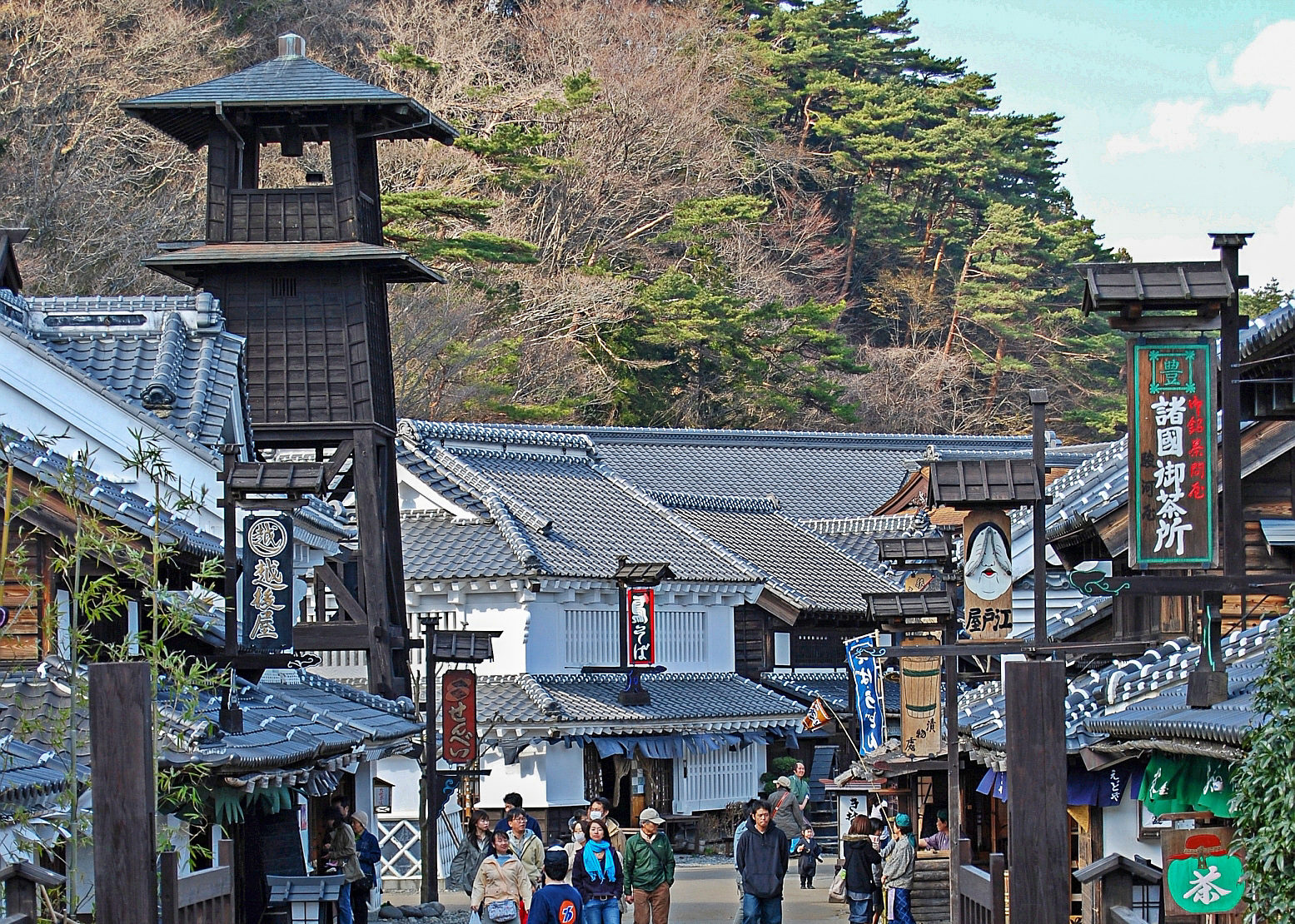
Situated in Nikko, Tochigi Prefecture Japan, this theme park is really a small town built in the ancient edo style. Walking into the theme park will bring you back to the days of yore, as everyone will be walking around with edo costumes such as samurai, princess, ninja and others. You will also get to visit ancient armour repair shops, blacksmiths and prison wax museum that shows the darkest days in Edo period.
ADMISSION FEE:
Adult (aged 13 years and older) ¥4,700
Children (aged 6 – 12) ¥2,400
OPENING HOURS:
09:00 – 17:00
HOW TO GET THERE:
Take the JR Train to Nikko Station. 2.5 hours from Tokyo by car



